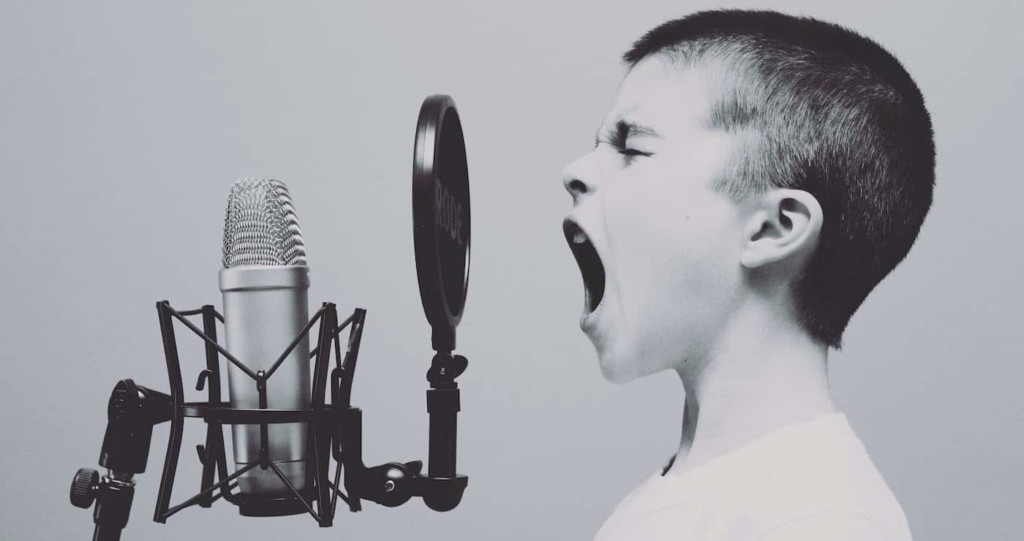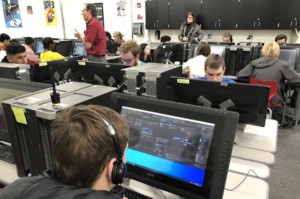Students Tackle Real World Topics with Podcasts

By: Stevie Frank
Podcasts are on the rise across K-12 as a way to amplify student voice. Prior to distance learning, my fifth-grade humanities class embarked on a study of identity in which they tackled real-world topics—such as bullying, autism, school safety and beauty—in the process of creating their own podcasts.
The project kicked off with students choosing a book they wanted to read. Each novel delved into a specific identity theme—stories included Rules by Cynthia Lord, Mockingbird by Kathryn Erskine, Schooled by Gordon Korman, So B. It by Sarah Week, Stargirl by Jerry Spinelli, and Ugly by Robert Hoge. Through these age-appropriate stories, they were able to explore different identities in the context of real-world issues.
After studying their book, students began to brainstorm what identity concept they wanted to teach the rest of the class. The goal was to share the main character’s experience and explain how this resonated with their group. As a class, we decided to use podcasts as the way to capture and share these learning experiences.
To create our podcasts, we used Soundtrap’s online studio, as it allowed students to record and edit their scripts and interview adults as “expert sources” relevant to their topic of choice. To prepare students for the task of scriptwriting, we reviewed several lessons on how to organize a podcast. During this time, students learned to write an intro and outro piece, draft transitions, and, the most important lesson, identify their audience—which they all agreed should be their fellow classmates. Students could record directly into the online studio or use their phone’s microphone to record and upload.
This end product was a podcast series to surface and explore real-world topics. Here are two of the podcasts and topics they covered:
- Love, Starwest – This podcast was inspired by Stargirl, in which the main character spreads random acts of kindness anonymously. Inspired by her example, this group spread random acts of kindness to students and teachers throughout the school. Afterwards, they interviewed three people on the receiving end and recorded their reactions upon learning about the project. Tune in to the podcast to hear how the students take a lighthearted banter approach to storytelling:
- Project Ugly – After reading the book Ugly, students in this group were inspired to explore notions of beauty and the value of finding beauty from within. They asked fellow students questions such as, “How do you feel about your appearance?” They also interviewed the founder of a local company called Project Gorgeous on how to mitigate stress and its impact on appearance. Listen to the podcast:
Our final step was to submit these podcasts to NPR’s Student Podcasting Challenge, a nationwide competition for student-created audio stories. The NPR education team recently released the results and my students’ podcast Love, Starwest was named as an honorable mention for this year’s Podcast Challenge, a huge accomplishment for my students who are first time podcasters.
Tips for Educational Podcasting
Podcasting is a great way to transform traditional writing assignments into engaging audio stories that teach students to use vocal expression and other sounds to amplify their message, as well as expose students to the real world application of technology. Here are some important tips from my students’ experiences:
- Get started by exploring podcasts – For many of my students, this was their first time being introduced to podcasts. One of the first steps we did as a class was to listen to professional and student-made podcasts to get a better understanding of the format. We listened to shows on BestRobotEver, WBUR’s Kind World, KidNuz, WhatIfWorld, as well as explored NPR’s various resources including how-to podcast guides for teachers and students.
- Support the writing process – We treated script writing just like any other writing assignment the class had previously completed. After reading their books, students got started brainstorming their topic ideas. Additional steps included defining their target audience, creating an outline to organize their narrative, and conducting research about their topic. I had my students create their own Padlet to share and collaborate on new researching findings within their group.
- Assign students roles – As the project got underway, I recognized that students were beginning to informally take on different production roles, which was helping to increase engagement and move the project along. I started to assign distinct roles to take charge of various elements of podcasting, such as online studio manager, interviewer, recorder, and editor.
- Practice makes perfect – Just like their more traditional writing assignments, script-writing involved several rounds of revisions. We found that recording the scripts in segments, rather than all the way through the entire narrative, was key for allowing for students to make minor adjustments to improve their scripts without having to re-record the entire episode.
For more, see:
- The Increasing Role of Artificial Intelligence in Our Lives
- Respondus LockDown: Is That the Answer to Prevent Student Cheating on Exams
- Nicole Berg & Kimberly Howard on Educating on Climate Change
Stevie Frank is a fifth-grade humanities teacher at Zionsville West Middle School. This is her 11th year of teaching. She’s taught 4th and 5th grade and has young boys at home that keep her busy! Follow Stevie on Twitter @steviefrank23.
Stay in-the-know with innovations in learning by signing up for the weekly Smart Update.







Lisa Risch
Inspired already!! This is going to be awesome! Thank you!